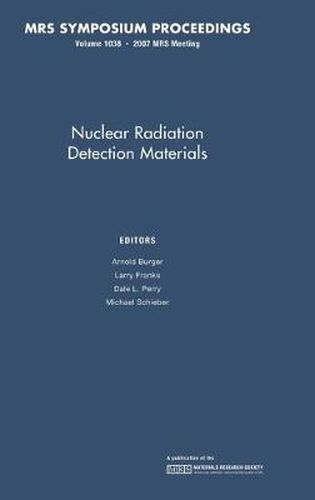Readings Newsletter
Become a Readings Member to make your shopping experience even easier.
Sign in or sign up for free!
You’re not far away from qualifying for FREE standard shipping within Australia
You’ve qualified for FREE standard shipping within Australia
The cart is loading…






The scope of detector materials for semiconductors and scintillators includes a wide variety of molecular compounds such as cadmium zinc telluride (CZT), lanthanum halides, and others. An additional class of scintillators is based on organic compounds and glasses. Ideally, attributes of materials used for radiation detection include appropriate-range bandgaps, high atomic numbers of the central element, high densities, performance at room temperature, strong mechanical properties, and low production cost. Unfortunately, there are significant gaps in the knowledge required to produce radiation detection materials of higher quality - in terms of reproducible purity, homogeneity and mechanical integrity. This book explores results in radiation detection materials from both experimental and theoretical standpoints, as both are needed to grow and characterize materials that will produce better detectors in the future.
$9.00 standard shipping within Australia
FREE standard shipping within Australia for orders over $100.00
Express & International shipping calculated at checkout
The scope of detector materials for semiconductors and scintillators includes a wide variety of molecular compounds such as cadmium zinc telluride (CZT), lanthanum halides, and others. An additional class of scintillators is based on organic compounds and glasses. Ideally, attributes of materials used for radiation detection include appropriate-range bandgaps, high atomic numbers of the central element, high densities, performance at room temperature, strong mechanical properties, and low production cost. Unfortunately, there are significant gaps in the knowledge required to produce radiation detection materials of higher quality - in terms of reproducible purity, homogeneity and mechanical integrity. This book explores results in radiation detection materials from both experimental and theoretical standpoints, as both are needed to grow and characterize materials that will produce better detectors in the future.